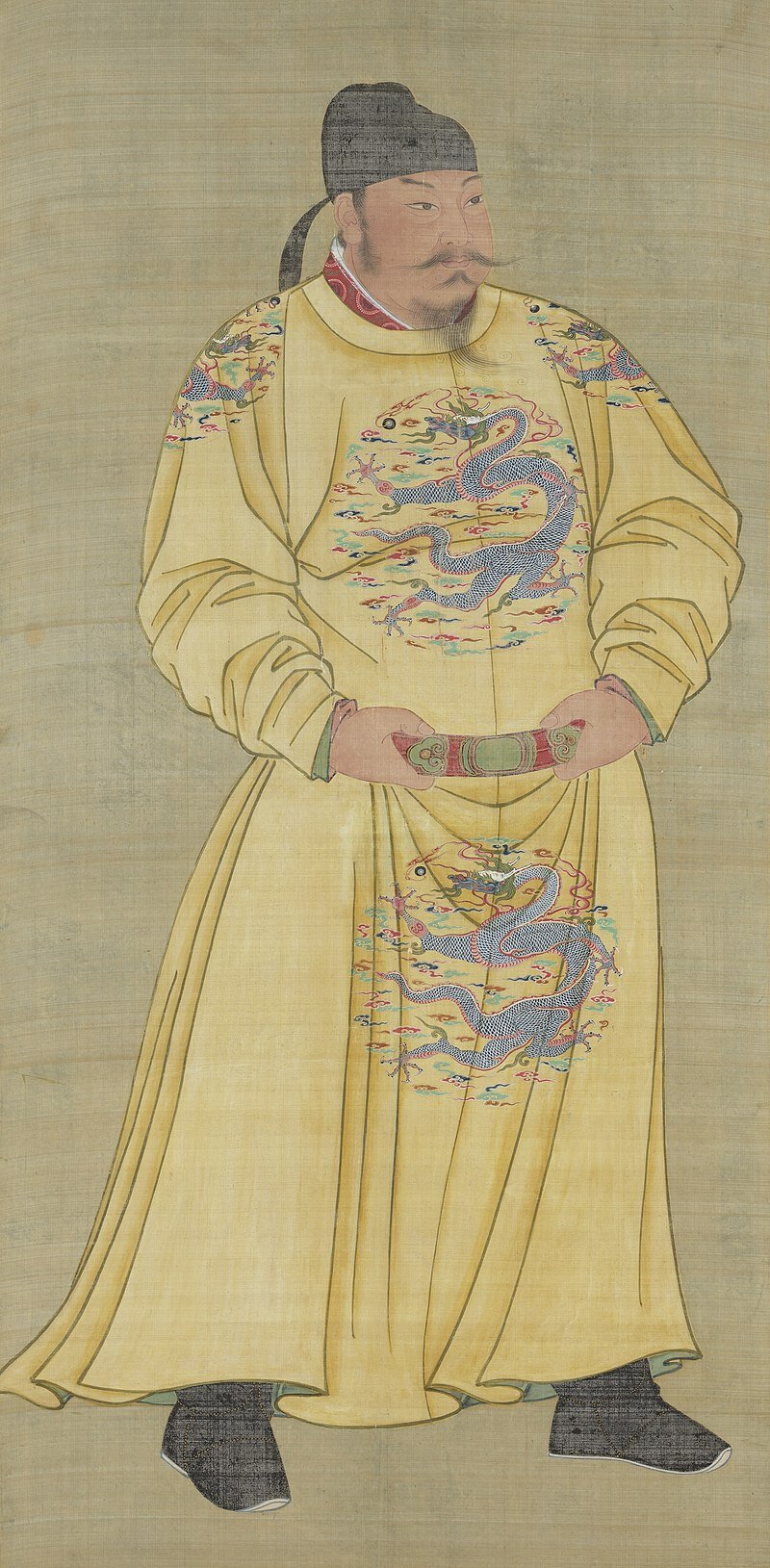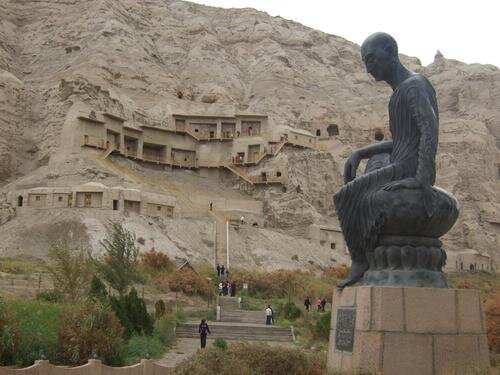Ep. 248 | The History of Xinjiang (Part 5)
The saga continues, and rather exciting it is becoming…the Göktürks, the Sui Dynasty, Buddhism galore, and lots of historic times to groove on.
In this Part 5 episode, the plot thickens and Xinjiang is getting a facelift. In a few hundred years you will hardly recognize it.
Listen On Your Favorite Podcast Player
Terms in Episode
| Pinyin/Term | Chinese | English/Meaning |
|---|---|---|
| Àixīn Juéluó | 爱新觉罗 | Aisin Gioro Clan, the highest ranking among the Manchu's. All Qing Emperors came from this clan |
| Āshǐnà Tribe | 阿史那 | The leading and highest ranking tribe among the Göktürks |
| Bān Chāo | 班超 | 32-102 BCE, great Eastern Han Dynasty general |
| Bān Yǒng | 班勇 | Youngest Son of Ban Chao |
| Cháng’ān | 长安 | Present day Xian, in Shaanxi province. Capital of the Western Han, the Tang and a few other dynasties |
| Dà Táng Xīyù Jì | 大唐西域记 | “The Great Tang Records on the Western Regions.” |
| Dī | 氐 | One of the Five Barbarian tribes of the Northern Eurasian Steppe. |
| Dōng Tūjúe | 东突厥 | The Eastern Turks |
| Dūnhuáng | 敦煌 | City in western Gansu famous for the Mogao Grottos and the treasures carted away by Air Aurel Stein and others |
| Emperor Yìwǔ | 懿武帝 | Founder of the Later Liáng 后凉 Dynasty 386-403 |
| Former Qín | 前秦朝 | 351-394, One of the Sixteen Kingdom, and a Buddhist loving one at that |
| Fóguó Jì | 佛国记 | “A Record of Buddhist Kingdoms.” |
| Fǎxiǎn | 法显 | Lived 337-402, famous for his pilgrimage to the west between 399 and 412 where he sought out Buddhist scriptures that he might study and bring back to China |
| Gānsù Province | 甘肃省 | Province of Western China. Capital is Lanzhou |
| Gāochāng | 高昌 | Also called Karakhoja, the "Chinese colony" setup where the Jushi Kingdom used to be. Later the site of a Chinese Commandery (郡) |
| Gūzāng | 姑臧 | Capital of the Later Liang Dynasty in Gansu, present day Wuwei |
| Heavenly King Yáo Xìng | 天王姚兴 | Later Qin ruler who reigned 394-416. He preferred to be titled Heavenly King instead of emperor |
| Huò Qùbìng | 霍去病 | 140-117 BCE, Great Han general known for his battles and victories in the west of China |
| Huǒyàn Shān | 火焰山 | Flaming Mountains just to the east of Turpan |
| Héxī Corridor | 河西走廊 | Also known as the Gansu Corridor, the main road from westernmost China to the easternmost Tarim Basin where the northern route of the Silk Road began |
| Jiànkāng | 建康 | Capital of several ancient dynasties, located in and around present day Nanjing |
| Jiūmóluóshí | 鸠摩罗什 | Kumārajīva, lived from 344-413 |
| Jūshī | 车师 | Located in present day Turpan, once a great and ancient kingdom. Also known as Gūshī 姑師. Will be discussed next episode |
| Later Liáng Dynasty | 后凉 | 386-403, One of the Sixteen Kingdoms, founded by Lü Guāng |
| Later Qín Dynasty | 后秦 | 384-417, one of the Sixteen Kingdoms, one that particularly embraced Buddhism |
| Línfén, Shānxī | 山西临汾 | Capital of the Legendary Emperor Yao, located in Shanxi province |
| Lóulán | 楼兰 | Known also as Krorän, an ancient kingdom on the north shores of Lop Nor. Loulan was later renamed Shanshan after China took it over |
| Lǐ Shìmín | 李世民 | Along with his father Li Yuan, this great warrior was also known as Emperor Taizong |
| Lǐ Yuān | 李渊 | Founder of the Tang Dynasty, known also as Emperor Taizu |
| Lǚ Guāng | 吕光 | 337-400, also known as Emperor Yiwu of Later Liang. Before that he was a general in the Former Qin Army |
| Northern Wèi | 北魏 | 386-534, also known as the Tuoba Wei because of the founding Tuoba Clan. |
| Qiūcí | 龟兹 | City in Xinjiang where the Kingdom of Kucha was located |
| Qín Dynasty | 秦朝 | 221-206 BCE, China's first imperial dynasty |
| Qín Shǐhuáng | 秦始皇 | 259-210 BCE, Founder of the Qin Dynasty |
| Róurán | 柔然 | A Donghu 东胡) Xianbei 鲜卑) tribal confederation whose Khaganate lasted from 330 to 555 CE |
| Sūn Wùkōng | 孫悟空 | The Monkey King character from Journey to the West |
| Tang Dynasty | 唐朝 | One of China's greatest dynasties. Lasted 618-907 |
| Tūjúe | 突厥 | The Turks (or Türks) |
| Tǔlǔfān | 吐鲁番 | Turpan (or Turfan) |
| Wèi Qīng | 卫青 | Died in 106 BCE, another great Han general known for his battles and victories in the west of China with Huo Qubing |
| Wǔhú | 五胡 | "The Five Barbarians", name applied to northern steppe nomads who stressed out China from time immemorial |
| Wǔwēi | 武威 | Ancient and historic city in Gansu Province |
| Xiōngnú | 匈奴 | A once powerful confederation of tribes whose empire once stretched from the eastern reaches of the Mongol homeland and into East Central Asia |
| Xuánzàng | 玄奘 | 602-664. Seventh century Buddhist pilgrim and adventurer who traveled to India and back |
| Xī Tūjúe | 西突厥 | The Western Turks |
| Xī Yóu Jì | 西游记 | Journey to the West, one of the four great classical novels of China |
| Xīnjiāng | 新疆 | The area that is now contained in the Xinjiang Uyghur Autonomous Region in China. Also known by many names prior to 1884 |
| Xīnjiāng Wéiwú'ěr Zìzhìqū | 新疆维吾尔自治区 | Xinjiang Uyghur Autonomous Region |
| Yáng Jiān | 杨坚 | Founder of the Sui Dynasty. |
| Yèhù | 叶护 | Yabgu, a vassal of the Eastern Turkic Khaganate but for all intents and purposes, the Yabgu was the "Khan" of the Western Khaganate |
| Yīlì Kèhán | 伊利可汗 | Bumin Khagan, founder of the Turkic Khaganate |
| Zhāng Qiān | 张骞 | The great Han adventurer who journeyed to the West between 138-126 BCE and whose story is immortalized in ancient Chinese texts |


























Laszlo chats with author Scott Crawford about the Han Dynasty, the Xiongnu, and Rome.